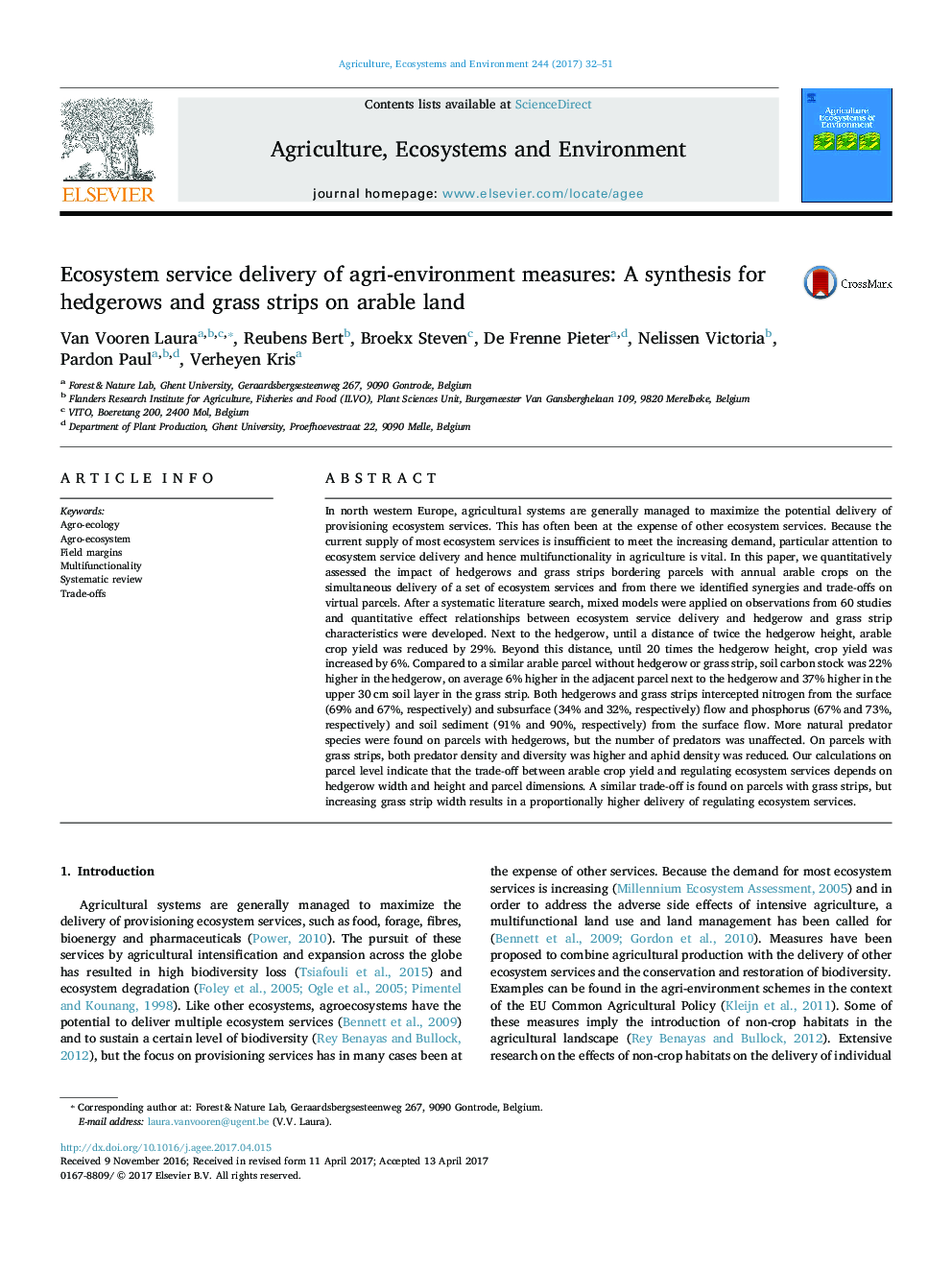| Article ID | Journal | Published Year | Pages | File Type |
|---|---|---|---|---|
| 5538248 | Agriculture, Ecosystems & Environment | 2017 | 20 Pages |
Abstract
In north western Europe, agricultural systems are generally managed to maximize the potential delivery of provisioning ecosystem services. This has often been at the expense of other ecosystem services. Because the current supply of most ecosystem services is insufficient to meet the increasing demand, particular attention to ecosystem service delivery and hence multifunctionality in agriculture is vital. In this paper, we quantitatively assessed the impact of hedgerows and grass strips bordering parcels with annual arable crops on the simultaneous delivery of a set of ecosystem services and from there we identified synergies and trade-offs on virtual parcels. After a systematic literature search, mixed models were applied on observations from 60 studies and quantitative effect relationships between ecosystem service delivery and hedgerow and grass strip characteristics were developed. Next to the hedgerow, until a distance of twice the hedgerow height, arable crop yield was reduced by 29%. Beyond this distance, until 20 times the hedgerow height, crop yield was increased by 6%. Compared to a similar arable parcel without hedgerow or grass strip, soil carbon stock was 22% higher in the hedgerow, on average 6% higher in the adjacent parcel next to the hedgerow and 37% higher in the upper 30Â cm soil layer in the grass strip. Both hedgerows and grass strips intercepted nitrogen from the surface (69% and 67%, respectively) and subsurface (34% and 32%, respectively) flow and phosphorus (67% and 73%, respectively) and soil sediment (91% and 90%, respectively) from the surface flow. More natural predator species were found on parcels with hedgerows, but the number of predators was unaffected. On parcels with grass strips, both predator density and diversity was higher and aphid density was reduced. Our calculations on parcel level indicate that the trade-off between arable crop yield and regulating ecosystem services depends on hedgerow width and height and parcel dimensions. A similar trade-off is found on parcels with grass strips, but increasing grass strip width results in a proportionally higher delivery of regulating ecosystem services.
Related Topics
Life Sciences
Agricultural and Biological Sciences
Agronomy and Crop Science
Authors
Van Vooren Laura, Reubens Bert, Broekx Steven, De Frenne Pieter, Nelissen Victoria, Pardon Paul, Verheyen Kris,
